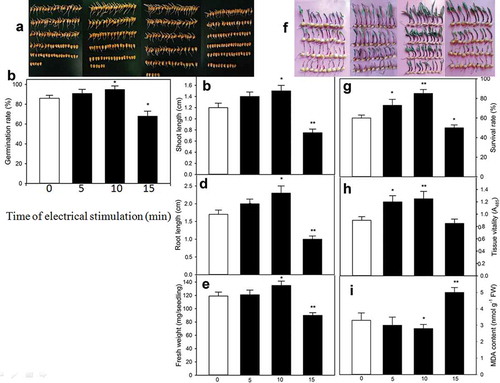Figures & data
Figure 1. Effect of electrical stimulation on seed germination (a, b), shoot length (c), root length (d), and fresh weight (e) under normal germination conditions, as well as survival rate (f, g), tissue vitality (h), and malondialdehyde (MDA) content (i) of maize seedlings under heat stress. To determine seed germination and seedling growth, the watered maize seeds were treated with electrical stimulation at 22 V for 0, 5, 10, and 15 min, respectively, once per 20 h, and then germinated at 26°C for 60 h. After germination, germination rate, shoot length, root length, and fresh weight were measured. To evaluate thermotolerance, after a 60-h germination, the 60-h-old maize seedlings treated with electrical stimulation above were exposed to heat stress at 47°C for 16 h. After heat stress, survival rate, tissue vitality, and MDA content were determined. The data in figure are the mean ± standard error (SE) (n = 6), significance was tested with Least Significant Difference (LSD), asterisk (*) and double asterisk (**) indicate significant difference (P˂ .05) and very significant difference (P ˂ 0.01) compared to the control without electrical stimulation, respectively.

